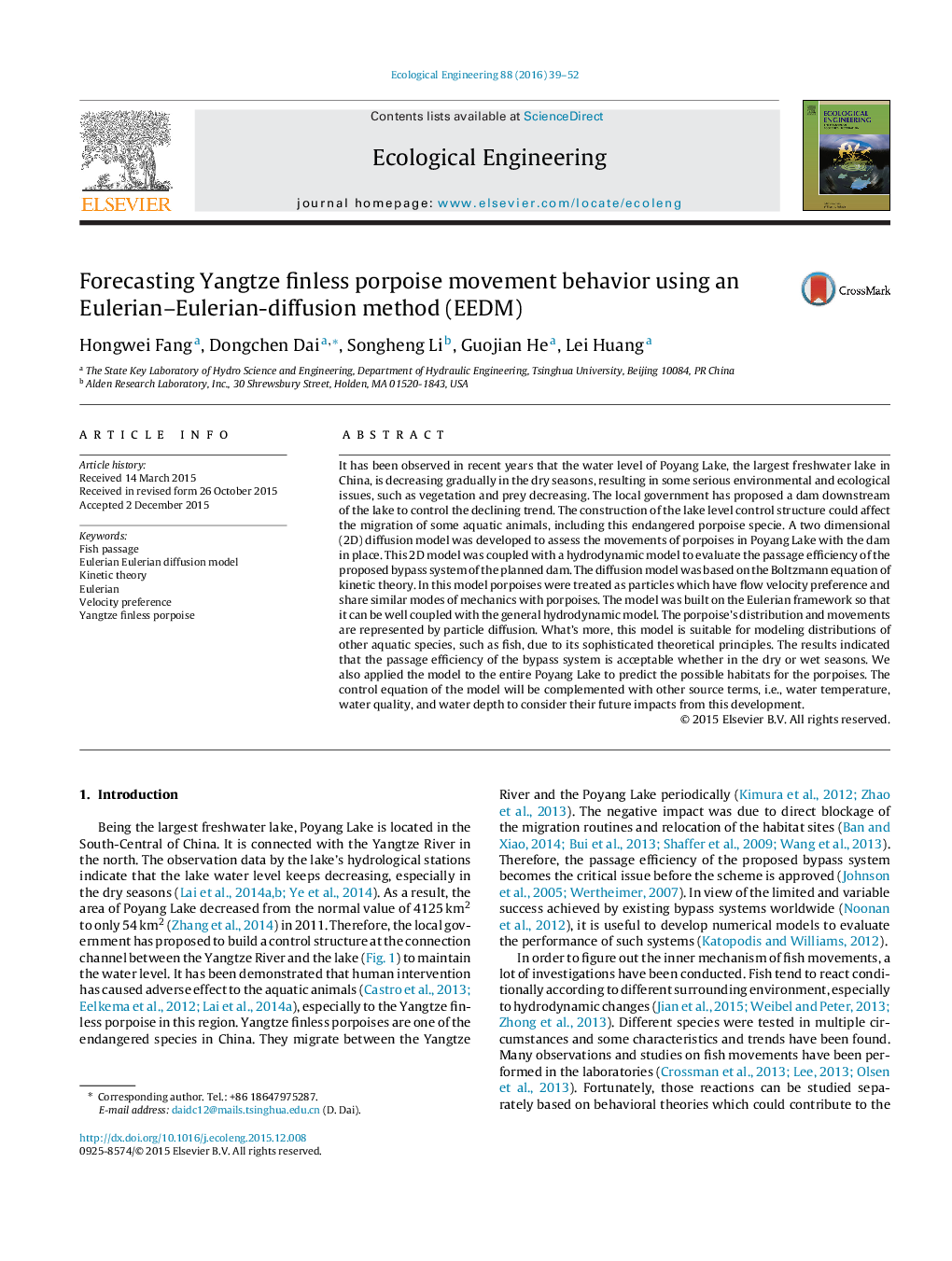| Article ID | Journal | Published Year | Pages | File Type |
|---|---|---|---|---|
| 6301533 | Ecological Engineering | 2016 | 14 Pages |
Abstract
It has been observed in recent years that the water level of Poyang Lake, the largest freshwater lake in China, is decreasing gradually in the dry seasons, resulting in some serious environmental and ecological issues, such as vegetation and prey decreasing. The local government has proposed a dam downstream of the lake to control the declining trend. The construction of the lake level control structure could affect the migration of some aquatic animals, including this endangered porpoise specie. A two dimensional (2D) diffusion model was developed to assess the movements of porpoises in Poyang Lake with the dam in place. This 2D model was coupled with a hydrodynamic model to evaluate the passage efficiency of the proposed bypass system of the planned dam. The diffusion model was based on the Boltzmann equation of kinetic theory. In this model porpoises were treated as particles which have flow velocity preference and share similar modes of mechanics with porpoises. The model was built on the Eulerian framework so that it can be well coupled with the general hydrodynamic model. The porpoise's distribution and movements are represented by particle diffusion. What's more, this model is suitable for modeling distributions of other aquatic species, such as fish, due to its sophisticated theoretical principles. The results indicated that the passage efficiency of the bypass system is acceptable whether in the dry or wet seasons. We also applied the model to the entire Poyang Lake to predict the possible habitats for the porpoises. The control equation of the model will be complemented with other source terms, i.e., water temperature, water quality, and water depth to consider their future impacts from this development.
Related Topics
Life Sciences
Agricultural and Biological Sciences
Ecology, Evolution, Behavior and Systematics
Authors
Hongwei Fang, Dongchen Dai, Songheng Li, Guojian He, Lei Huang,
